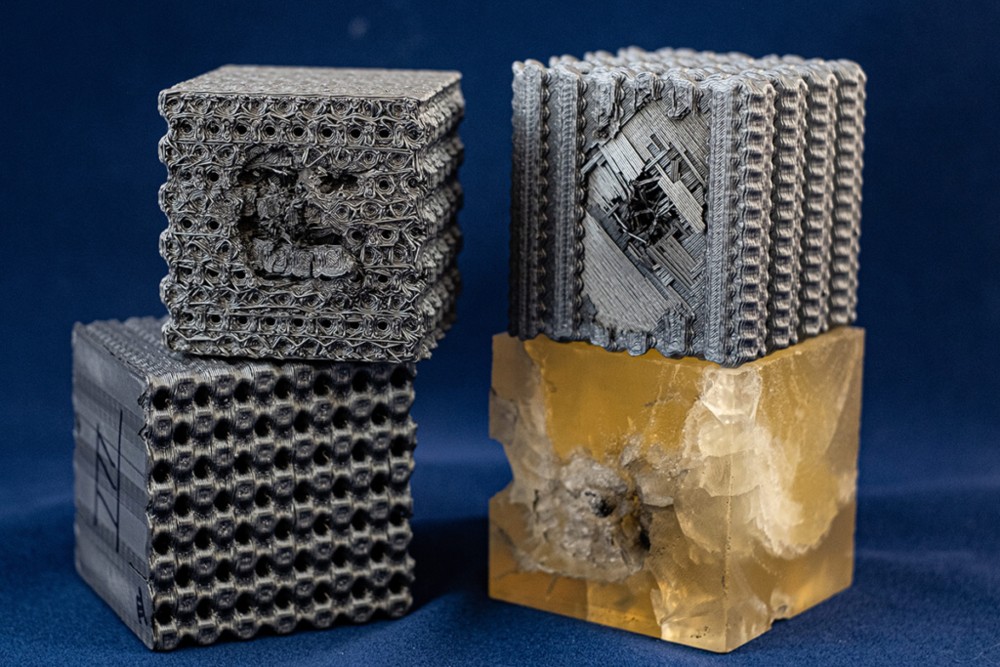And there’s a great picture at the top of the report:
What they did was scale up a 3D printing technique that had been developed at a micro level a quarter of a century ago, for making a really strong micro-structure, and they scaled it up, with results such as you observe above. They they fired bullets at it. And it was neither shattered, nor even much penetrated. Which was the same story as happened with the original miniature version.
But the report is in The Architect’s Newspaper, so they give the story an architectural twist:
But what does this mean for architecture? The team at Rice envisions a future where ceramic, concrete, steel, and other common building materials could be printed in porous tubular approximations. Limited only by the size of the printer, these structures could someday form the basis of ultra-strong building materials that are more durable and react more safely to stress, all while being lighter and, if left uncovered, having a unique, knit-like aesthetic.
Sounds a bit like a sword (in this case armour plating) trying to pass itself off as (or being passed off as) a ploughshare. “Could” (see also the title of this posting (and of the report itself)) suggests to me that the stuff like that in the above quoted paragraph was actually spoken by someone ringing up these scientists, and one of them merely saying: “Yeah, I suppose that could be true.” But, you know, maybe it could.

